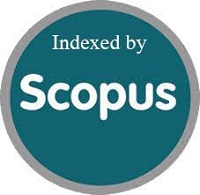Relative Importance Analysis for Psychological Research
DOI:
https://doi.org/10.15408/jp3i.v10i1.20552Keywords:
regression, relative importance, Shapley value, relative weightAbstract
Multiple linear regression analysis is widely used among psychological researchers to answer their research question related to causality relationship. Exploring the relative importance of independent variables in explaining the total variation in dependent variable is one of the primary interests upon finding a good fit model from the data. This paper considers two popular methods to obtain relative importance, namely Shapley value regression and relative weight analysis. Both are able to break down the R2 of the full model into individual contribution proportion of each independent variable while accounting for the correlations between independent variables and thus offer easily interpretable effect size measures for regressions. Kaggle’s empirical data from the World Happiness 2019 will illustrate the theoretical concept of methods above.References
Aas, K., Jullum, M., and Loland, A. (2019). Explaining individual predictions when features are dependent: more accurate approximation to shapley values. arXiv:1903.1046.
Coleman, C. D. (2017). Decomposing the r-squared of a regression using the shapley value in SAS® . SouthEast SAS Users Group Conference.
Darlington, R. B. (1968). Multiple regression in psychological research and practice. Psychological Bulletin, 69(3), 161-182. https://doi.org/10.1037/h0025471.
Groemping, U. (2006). Relative importance for linear regression in R: the package relaimpo. Journal of Statistical Software, 17(1), 1-27. https://doi.or/10.18637/jss.v017.i01.
Groemping, U. (2015). Variable importance in regression model. WIREs comput stat, 7(2), 137-152. https://doi.org/10.1002/wics.1346.
Healy, M. (1990). Measuring importance. Statistics in Medicine, 9(6), 633–637. https://doi.org/10.1002/sim.4780090609.
Johnson, J. W. (2000). A heuristic method for estimating the relative weight of predictor variables in multiple regression. Multivariate behavioral research, 35(1), 1-19. https://doi.org/10.1207/S15327906MBR3501_1.
Johnson, J. W. and LeBreton, J. M. (2004). History and use of relative importance indices in organizational research. Organizational Research Methods, 7(3), 238-257. https://doi.org/10.1177/1094428104266510.
Joseph, A. (2019). Shapley regressions: a framework for statistical inference on machine learning models. Bank of England Working Paper, 784. http://dx.doi.org/10.2139/ssrn.3351091.
Lipovetsky, S. and Conklin, W. M. (2015). Predictor relative importance and matching regression parameters. Journal of Applied Statistics, 42(5), 1017–1031. https://doi.org/10.1080/02664763.2014.994480.
Shabuz, Z. R. and Garthwaite, P. H. (2019). Contribution of individual variables to the regression sum of squares. Model Assisted Statistics and Applications, 14(4), 281–296. https://doi.org/10.3233/MAS-190468.
Shapley, L.S. (1953). A value for n-person games, in H.W. Kuhn and A.W. Tucker (eds), Contributions to the theory of games, II, Annals of Mathematical Studies, Vol. 20 (pp. 307–317). Princeton University Press.
Stadler, M., Thomas, H.D.C, and Greiff, S. (2017). A primer on relative importance analysis: illustrations of its utility for psychological research. Psychological Test and Assessment Modeling, 59(4), 381-403.
Strumbelj, E. and Kononenko, I.. (2010). An efficient explanation of individual classifications using game theory. Journal of Machine Learning Research, 11(1), 1–18. https://doi.org/10.1145/1756006.1756007.
Tonidandel, S., LeBreton, J. M., & Johnson, J. W. (2009). Determining the Statistical Significance of Relative Weights. Psychological Methods, 14(4), 387-399. https://doi.org/10.1037/a0017735.



